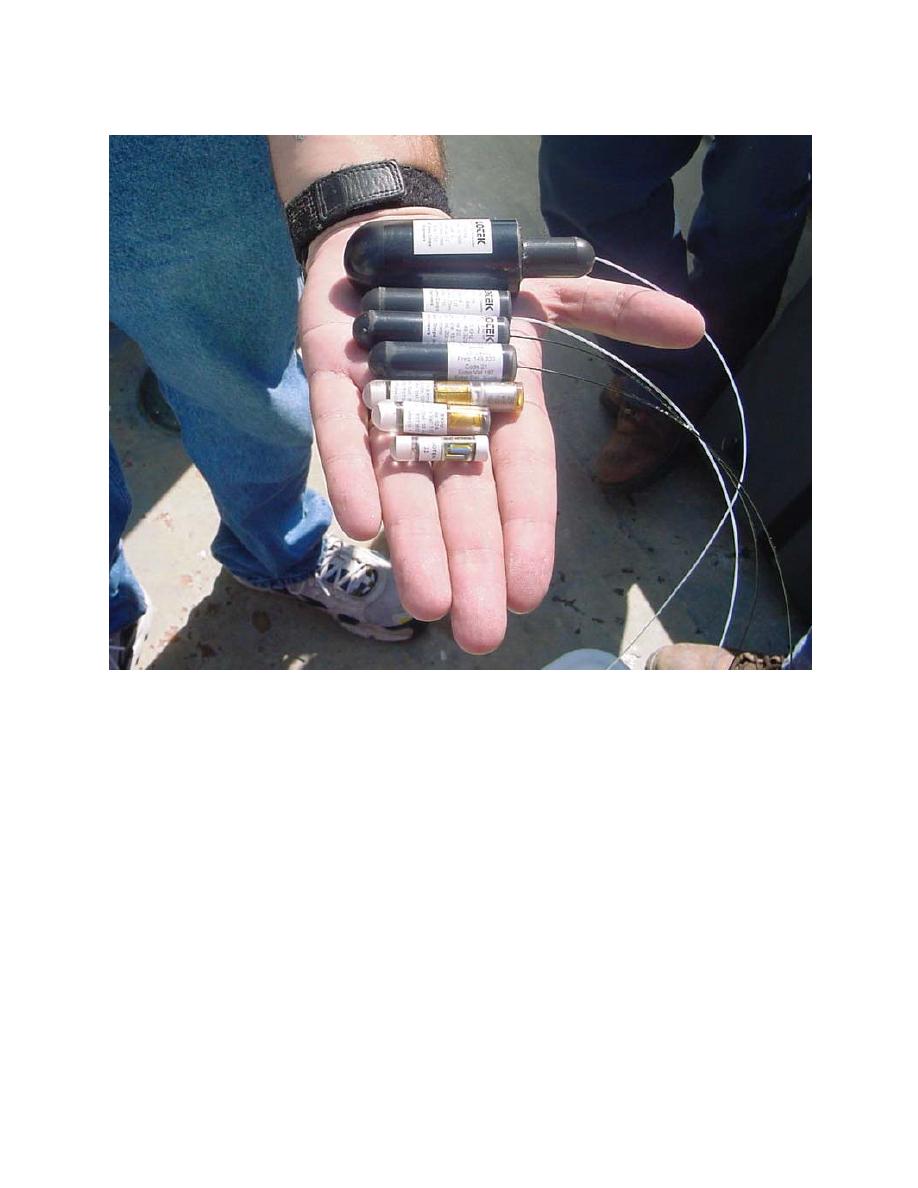 |
||
|
|
||
|
Page Title:
Figure 1. Radio (upper four) and sonic (lower three) tags and their typical size ranges |
||
| |||||||||||||||
|
|
 ERDC TN-DOER-E18
February 2005
Figure 1.
Radio (upper four) and sonic (lower three) tags and their typical size ranges (manufactured by
Lotek)
through water and into the atmosphere. Transmissions are received with tuned antennas of
varying sizes and designs. Radio tags typically operate at high frequencies (20-250 MHz) and are
the preferred method in freshwater environments of low conductivity. A significant advantage of
radio tags as compared to acoustic transmitters is that radio signal transmissions are less affected
by physical obstacles, turbidity, turbulence, and thermal stratification (Thorsteinsson 2002).
Transmission of signals by radio tags may be either pulsed or coded. Pulsed radio tags transmit a
simple ratio pulse at set intervals to a radio receiver, while coded radio tags contain a
programmable micro-chip, which can transmit a digitally encoded radio signal at user-defined
intervals to a decoder or recorder. Radio telemetry has been successfully used to evaluate fish
passage efficiency through hydropower facilities, presence and movement within riverine
systems, migration patterns, response to behavioral guidance structures, habitat utilization and
entrainment studies.
Habitat preferences of the target species must be considered before selecting radio telemetry as a
monitoring option. If the species of interest spends a majority of time at water depths >5 m, radio
4
|
|
Privacy Statement - Press Release - Copyright Information. - Contact Us - Support Integrated Publishing |